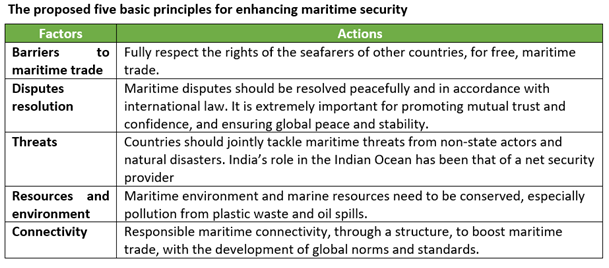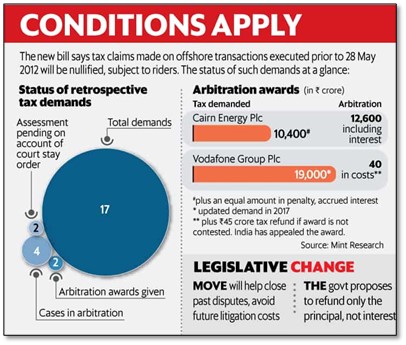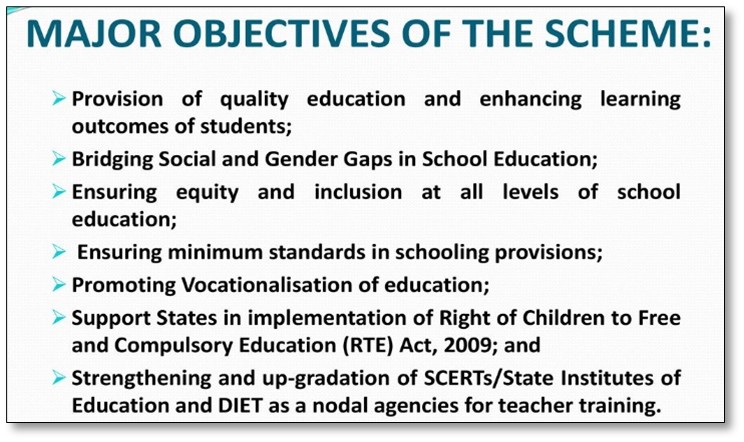Tuesday, 13th July 2021
Uttar Pradesh Unveils New Population Policy 2021-2030
In News
The Uttar Pradesh government has announced new Draft Population Policy 2021-2030 on the occasion of World Population Day (11 July).
Key Features
- It promotes a two-child policy, violation of which would mean people will be debarred from contesting local body elections, applying for government jobs, or availing service benefits and receiving any government subsidy.
- Efforts will be made to increase the accessibility of contraceptive measures issued under the Family Planning Programme and provide a proper system for safe abortion.
- Comprehensive arrangements will be made for the care of the elderly, apart from better management of education, health, and nutrition of adolescents between 11 to 19 years.
- Focus area also include reducing the newborns' and maternal mortality rate. Maternity centres will be set up at all primary health centres.
- Target is to bring the birth rate to 2.1 per thousand population by 2026 and to 1.9 by 2030.
- The policy will be voluntary - it will not be enforced upon anyone.
Two Child Policy in India
- India does not have a national child policy on population control. So far, 12 States have introduced the two-child norm. These include, Rajasthan (1992), Odisha (1993), Haryana (1994), Andhra Pradesh (1994), Himachal Pradesh (2000), Madhya Pradesh (2000), Chhattisgarh (2000), Uttarakhand (2002), Maharashtra (2003), Gujarat (2005), Bihar (2007) and Assam (2017). Recently Lakshadweep also proposed similar norms.
- Of these, four States - Chhattisgarh, Himachal Pradesh, Madhya Pradesh and Haryana have revoked the norm.
Efficacy of Two Child Norms
- A five-State study (Madhya Pradesh, Andhra Pradesh, Haryana, Odisha and Rajasthan) by a bureaucrat entitled “Law of Two Child Norm in Panchayats – Implications, Consequences and Experiences” found that in the States that adopted a two-child policy, there was a rise in sex-selective and unsafe abortions; men divorced their wives to run for local body elections; and families gave up children for adoption to avoid disqualification.
- There is no evidence that coercive policies work. Stringent population control measures could potentially lead to an increase in sex selective practices, given the strong son-preference in India.
- States such as Kerala and Tamil Nadu have experienced significant reduction in fertility rates without any coercive methods. This has been achieved by empowering women and by providing better education and healthcare facilities.
Is there any concern of population explosion?
- There is no evidence that there is a population explosion in the country. India has already started experiencing a slowing down in population growth and a decline in fertility rate.
- Census 2011 confirms that the decadal growth rate during 2001-2011 had reduced to 17.7% from 21.5% over 1991-2001.
- The Total Fertility Rate (TFR) is decreasing in India, going down from 3.4 in 1992-93 to 2.2 in 2015-16 (NFHS data).
- According to UN World Population Prospects 2019, by 2027, India is expected to overtake China to become the most populous country. The overall size of population will continue to increase for some more time as two-thirds of India’s population is under 35 years. This is termed as Population Momentum.
Conclusion
Development is the best contraceptive. Family planning is largely considered a woman’s responsibility, which is reflected in the low male engagement in family planning programmes. Apart from strict population control measures, India must address widespread deprivation, inequality, and social and gender discrimination in access to health, education, and employment opportunities.
Sources:
The 'RBI Retail Direct' scheme
In News
Reserve Bank of India (RBI) has issued the 'RBI Retail Direct' scheme to bring investments from individual investors into government securities.
About the News
As part of the central bank's ongoing efforts to increase retail participation in government securities, the 'RBI Retail Direct' facility was announced in February 2021 along with the facility to open their gilt securities account ('Retail Direct') with the RBI.
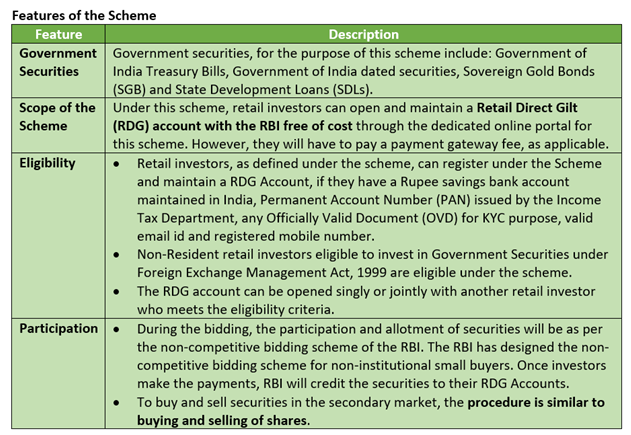
Significance of the Scheme
- The scheme will work as one-stop solution for retail investors interested in government securities. A dedicated bond-buying window for retail investors will democratize the ownership of government debt securities beyond banks and managers of pooled resources such as mutual funds.
- This new investment will provide more avenues for investments for retail investors beyond the current bank fixed deposits, fixed income mutual funds and government small saving schemes like the public provident fund. The total volume of savings will expand in the coming years.
- Direct retail participation would give competition to banks and other investment products.
Sources:
India Industrial Land Bank
In News
The Ministry of Commerce and Industry has announced that the India Industrial Land Bank will achieve pan-India integration by December 2021.
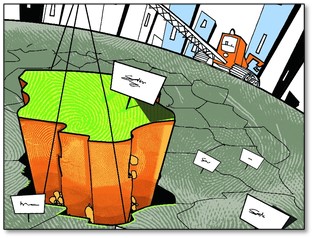
About the News
- Currently, the portal has approximately 4,000 industrial parks mapped across an area of 5.5 lakh hectares of land and serves as a decision support system for investors scouting for land remotely.
- The industrial land bank has grown in popularity, with its website registering 30 per cent increase in page views each month since April 2021.
- Budget 2020-21 had provided for pre-investment advisory and information related to land banks, besides facilitating clearances, in order to attract higher investment and increase ease of doing business in India.
What is India Industrial Land Bank?
- Department for promotion of Industry & Internal Trade (DPIIT) has developed India Industrial Land Bank (IIS) portal, a GIS-enabled database of industrial areas/clusters across the country to adopt a committed approach towards resource optimization, industrial upgradation, and sustainability.
- The portal serves as a one-stop solution to the free and easy accessibility of all industrial information including availability of raw material, agriculture, horticulture, minerals, natural resources; distance from key logistic nodes; layers of terrain and urban infrastructure.
- The IILB system has been integrated with industry-based GIS systems of 17 states so that details can be updated on the portal on a real-time basis.
- The land bank can be accessed via its website or a mobile application on Android and iOS. The application and portal do not require visitors to log in to access the information. Information on Land bank is also accessible via Homepage of the Department for Promotion of Industry and Internal Trade (DPIIT), as well as via Invest India website.
- The initiative is being supported by Invest India, the national investment promotion & facilitation agency, National Center of Geo-Informatics (NCoG), National e-Governance Division (NeGD), Ministry of Electronics & Information Technology and Bhaskaracharya Institute for Space Applications and Geo-Informatics (BISAG).
Sources:
North-East Council
In News
Arunachal Pradesh Chief Minister has expressed that North-East Council (NEC) can be to north-eastern states what the NITI Aayog is for the country – a one-point solution centre.
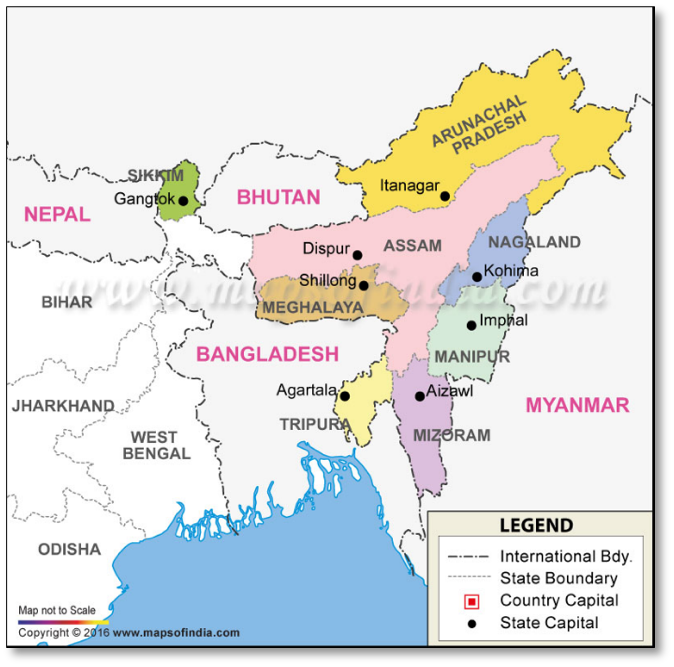
About the News
- The CM asserted the need for the NEC to shape and redefine its role in the emerging world with respect to the unique and different needs of each north-eastern state.
- Stressing that an empowered NEC must provide mentorship for planning and oversight in all priority sectors, NEC should play the role of an institutional anchor for the constituent states and help draw a blueprint of comprehensive development.
About the North-East Council (NEC)
- It is the nodal agency for the economic and social development of the North-Eastern Region consisting of the eight States of Arunachal Pradesh, Assam, Manipur, Meghalaya, Mizoram, Nagaland, Sikkim, and Tripura.
- The Shillong-based advisory body was constituted in 1971 by an Act of Parliament, with a twin mandate of planning and facilitating development and to serve as a forum to address common security challenges of the region.
- The Union Home Minister is the Chairman and Minister DoNER is the Vice chairman of the NEC under the current structure. The members of the NEC consist of the Governors and the Chief Ministers of the eight member States including Sikkim, apart from the Chairman and three Members who are nominated by the President of India.
- NEC can now also perform the tasks undertaken by the various Zonal Councils to discuss such inter-State issues as drug trafficking, smuggling of arms and ammunition, boundary disputes etc.

Factors affecting performance of the NEC
- Administrative Factors: There are problems such as recurring delays in completion of the projects due to poor planning process, delay and non-release of funds to the implementing agencies and inadequate monitoring and absence of impact assessments.
- Social Factors: The North-Eastern Region is home to more than one hundred ethnic communities with many complexities. The region had experienced insurgency for decades. The region faces rivalry among ethnic communities often leads to tensions among the communities. Often, primacy over ethnic identity, culture and customs result in resistance to some of the developmental projects.
- Economic Factors: The transport and communication network in the region is also still very poor and inadequate. Connectivity issues act as hurdles to investment, growth and competitiveness. Digital connectivity is weak and inadequate, hampering financial inclusion and growth of technology companies.
How can the NEC develop to become an one-point solution centre for north-east India?
- Better Project Management:
- Focus on Sustainable Projects: Emphasis should be given more on such projects, which are of regional nature or of economic importance benefiting two or more states, and has the capacity to sustain after withdrawal of NEC support.
- Assessment of Projects: In prioritizing the projects for inclusion in NEC plan factors like visibility of the project, social benefit, size and time frame of the project, monitoring potential, assurance of maintenance from the states, competence of the implementing agency, etc. can be considered.
- Effective Monitoring: For strengthening of monitoring and evaluation of the ongoing projects, the Evaluation and Monitoring Cell at the NEC needs to be revamped, with external agencies for monitoring and evaluation of the projects.
- Enhanced Co-ordination: For better functioning of the NEC as a development agency for the Northeast there should be a very well- coordinated relationship between NEC and DoNER. There needs to be total transparency about the procedures of sanctioning and allocation of funds to various States.
- The inclusion of the Union Home Minister as the NEC chairman will help the forum to facilitate better coordination between the Central Government and the State governments in planning development in the region. The change will also emboldens the forum to discuss issues pertaining to Centre-State relations more comprehensively.
- Institutional strengthening of NEC: It is another important requirement that should be taken care of, by inducting eminent planners, economists, heads of financial institutions may be at appropriate level of NEC to instil professionalism.
Conclusion
The northeast lies at the crossroads of ambitious international corridors — the Asian highway, the east-west corridor and the BCIM highway. NEC is expected to play a much greater role in view of the opening up of South-east Asian countries. Delhi is far too remote to plan for a region with such complexity and diversity. The NEC is ideally suited to take up this mantle, and serve as a bridge with the central government. Leading up to the NEC turning 50 in 2022, this is an opportune occasion to take a fresh look at its mandate and dwell upon a course of reform. The transition of NITI Aayog could serve as a template for a suitable reincarnation of the North Eastern Council.
Question: Analyse the significance of North-East Council in the development of North-East India.
Sources:
- North East Council could be for states what NITI Aayog is for the country: Pema Khandu:
- Revamping North eastern council will fast-track development:
- NEC Website
- Realise the potential of the North Eastern Council
- Challenges before the North Eastern CouncilNEC and the Development Initiatives in the Northeast
- Cabinet approves Schemes of North Eastern Council (NEC) including continuation of existing Schemes
This Day in History- Jatindra Nath Das
On July 13, 1929, Jatindra Nath Das started the historic hunger strike which lasted 63 days. Das was a Bengal revolutionary. He joined Bhagat Singh and his other comrades for a hunger strike in the Lahore Central Jail in 1929. He strongly felt that it would be against the revolutionary tradition to withdraw the strike without attaining the objectives. The strike was for equality of Indian political prisoners with those from Europe. Looking at his deteriorating condition, the British government offered to release him on bail, but he did not agree. Das did not end the fast and refused to be force-fed. He died at the age of 24 on September 13, 1929.
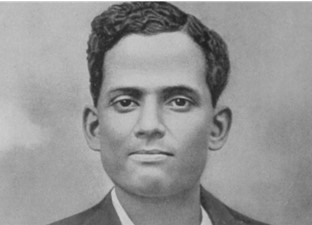
SOURCES:
Image of the Day- India’s First Cryptogamic Garden
This is the image of India’s first cryptogamic garden. Cryptogamae means “hidden reproduction” referring to the fact that no seed, no flowers are produced. Thus, cryptogams represent the non-seed-bearing plant. Algae, bryophytes (moss, liverworts), lichens, ferns and fungi are the best-known groups of cryptogams. The garden housing nearly 50 species of lichens, ferns and fungi was inaugurated at Deoban in Chakrata (Uttarakhand). Low pollution levels and moist conditions at Deoban are conducive for the growth of these species.

Source:
Lemru Elephant Reserve
- Context: The Chhattisgarh government hasproposed to reduce the area of Lemru Elephant Reserve from 1,995 sq km to 450 sq km.
- Lemru reserve is planned to prevent human-animal conflict in the region, with elephants moving into Chhattisgarh from Odisha and Jharkhand. It is located in the Korba district of Chhattisgarh.
- The area proposed under the reserve is part of the Hasdeo Aranya forests, a diverse biozone that is rich in coal deposits.
- The state government has notified the reserve (Conservation Reserve) under Section 36A of the WildLife (Protection) Act, 1972 in 2020.
- Elephant reserves are not recognized under the WLPA. However, an area can be declared a ‘conservation reserve’ under the Section.
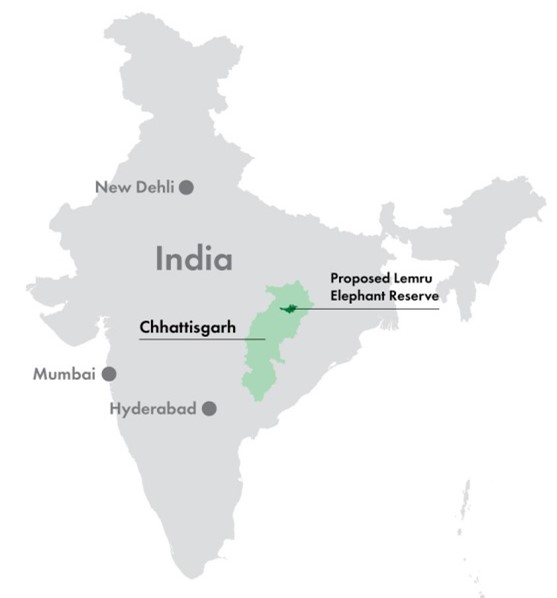
SOURCES:
- Will Chhattisgarh’s proposed elephant reserve have a smooth corridor.
- Explained: A proposed elephant reserve in Chhattisgarh, and its reduced area
- Adani and the Elephants of the Hasdeo Aranya Forest
Genome of Mangrove Species Decoded
- Context: Scientists have reported for the first time a whole genome sequence of a highly salt-tolerant and salt-secreting true-mangrove species, Avicennia marina.
- Avicennia marinais one of the most prominent mangroves species found in all mangrove formations in India.
- It is a salt-secreting and extraordinarily salt-tolerant mangrove species that grows optimally in 75% seawater and tolerates >250% seawater.
- It is among the rare plant species, which can excrete 40% of the salt through the salt glands in the leaves, besides its extraordinary capacity to exclude salt entry to the roots.
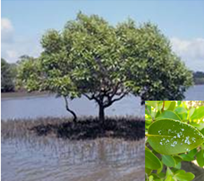
SOURCES:
Picture source:
Japanese Encephalitis-Acute Encephalitis Syndrome (JE-AES)
- Context: The Jal Jeevan Mission (JJM) has provided tap water supply to more than 97 lakh householdsin five JE-AES affected states.
- AES is characterized by acute-onset of fever and a change in mental status (mental confusion, disorientation, delirium, or coma) and/or new-onset of seizures.
- The disease most commonly affects children and young adults and can lead to considerable morbidity and mortality.
- Viruses are the main causative agents in AES cases, although other sources such as bacteria, fungus, parasites, chemicals, and toxins have also been reported over the past few decades.
- Japanese encephalitis virus (JEV) is the major cause of AES in India (ranging from 5%-35%).
- Herpes virus, Influenza A virus, West Nile virus, Chandipura virus, mumps, measles, dengue, Nipah and Zika are the other causes of AES.
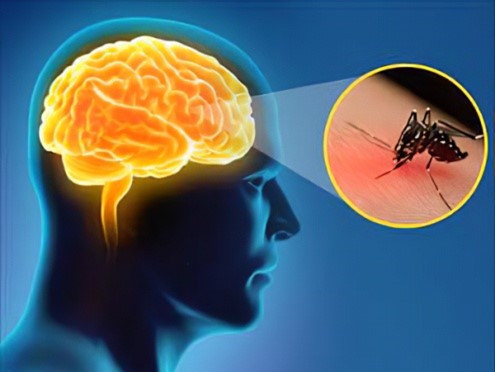
SOURCES:
- 97 Lakh Households get tap Water Supply in 5 Encephalitis Affected States in Just 22 Months.
- Acute encephalitis syndrome (AES) is a serious public health problem in India.
Picture source:
Net Stable Funding Ratio (NSFR)
- Context: Britain has carved out exemption for gold clearing banks from Basel III rule.
- NSFR is a part of Basel III regulation designed to make banks more stable and prevent crisis like the 2008 financial crisis.
- The objective of NSFR is to ensure that banks maintain a stable funding profile in relation to the composition of their assets and off-balance sheet activities.
- A sustainable funding structure is intended to reduce the probability of erosion of a bank’s liquidity position due to disruptions in a bank’s regular sources of funding that would increase the risk of its failure and potentially lead to broader systemic stress.
- The NSFR limits overreliance on short-term wholesale funding, encourages better assessment of funding risk across all on- and off-balance sheet items, and promotes funding stability.

SOURCES:
- Britain carves out exemption for gold clearing banks from Basel III rule.
- Basel III Framework on Liquidity Standards – Net Stable Funding Ratio (NSFR) – Final Guidelines.
Picture source:
How India can promote job creation
Essence: Despite being one of the fastest growing economy in the world, job creation is the biggest development challenge in India. Article answers questions like who the job creator will be, region of creation and technologies associated and their impact on job creation. Despite upward trend in the entry of new firms, India still has one of the lowest entrepreneurship rates in the world. It can be promoted by investment in human and physical infrastructures (ranks low in both) as seen in both the manufacturing and service sectors. We need a balanced strategy to increase job growth by improving the reach, quality education and health through global partnerships. Besides, recent reforms in labour regulations, service sector & the sector relate to energy and climate change should be encouraged.
Why should you read this article?
- To get an overview of unemployment and issues associated with creation of job in India.
- To know what possible steps should be taken to tackle issues associated with creation of job.
- To know the scope of other sectors in job creation in India.
SOURCES:
How education can combat prejudice
Essence: The conviction and sentencing of a policeman for the murder of George Floyd signifies a major success for the Black Lives Matter movement in the United States. However, the question of why racism persists in America, despite a prolonged and serious effort made in the education system to address the issue, remains. In this context, the article highlights the effort that those involved in education make to mitigate prejudice and recognise the limitations within which they function.
Why you should read this article?
- Understand the subtle difference between being partisan and prejudiced.
- Know how racial and religious remains an important axis of prejudice in all parts of the world.
- Understand how teachers and schools can deal with entrenched prejudices.
SOURCE:
Free rides for teachers’ vaccination’ campaign: A helping Hand
Background:
- Due to COVID-19 pandemic, 1.5 million schools shut down in 2020 in India which affected 320 million learners and their education, protection, and well-being.
- Throughout the pandemic, teachers have remained on the front-line to ensure continuity of learning
- Role of teachers as front-line workers increases in second wave so that schools can re-open and students can avail ‘in person’ learning. But some barriers to vaccination remain
Barriers to vaccination
- Lack of transport: Mass vaccination campaigns are hindered by a lack of suitable transport facilities.
- Fear due to long travel: Prolonged travel time to the vaccination sites also act as roadblock due to fear of contracting the virus on public transport.
Helping Hand:
- Now, the ride-sharing company Uber and UNESCO will offer ‘Free rides for teachers’ vaccination’ campaign.
- They will offer 1,00,000 rides to 25,000 teachers.
- A coordinated response is what is the need to fight the pandemic and continue to process of learning.
Values upheld:
Leadership, Innovation, Fraternity, Humanity, Co-operation, Co-ordination
- #LearningNeverStops, and that no learner is left behind.
SOURCE:
Share the article
Get Latest Updates on Offers, Event dates, and free Mentorship sessions.

Get in touch with our Expert Academic Counsellors 👋
FAQs
UPSC Daily Current Affairs focuses on learning current events on a daily basis. An aspirant needs to study regular and updated information about current events, news, and relevant topics that are important for UPSC aspirants. It covers national and international affairs, government policies, socio-economic issues, science and technology advancements, and more.
UPSC Daily Current Affairs provides aspirants with a concise and comprehensive overview of the latest happenings and developments across various fields. It helps aspirants stay updated with current affairs and provides them with valuable insights and analysis, which are essential for answering questions in the UPSC examinations. It enhances their knowledge, analytical skills, and ability to connect current affairs with the UPSC syllabus.
UPSC Daily Current Affairs covers a wide range of topics, including politics, economics, science and technology, environment, social issues, governance, international relations, and more. It offers news summaries, in-depth analyses, editorials, opinion pieces, and relevant study materials. It also provides practice questions and quizzes to help aspirants test their understanding of current affairs.
Edukemy's UPSC Daily Current Affairs can be accessed through:
- UPSC Daily Current Affairs can be accessed through Current Affairs tab at the top of the Main Page of Edukemy.
- Edukemy Mobile app: The Daily Current Affairs can also be access through Edukemy Mobile App.
- Social media: Follow Edukemy’s official social media accounts or pages that provide UPSC Daily Current Affairs updates, including Facebook, Twitter, or Telegram channels.

